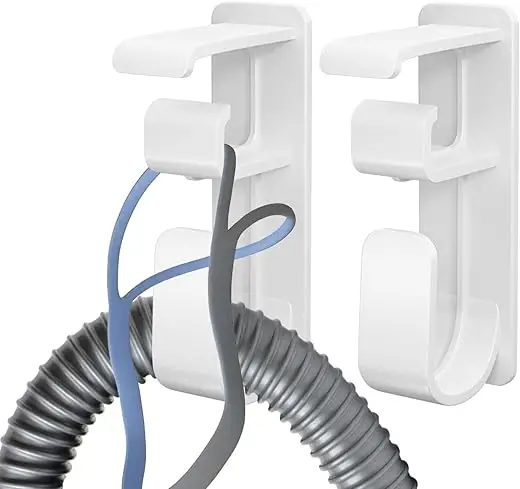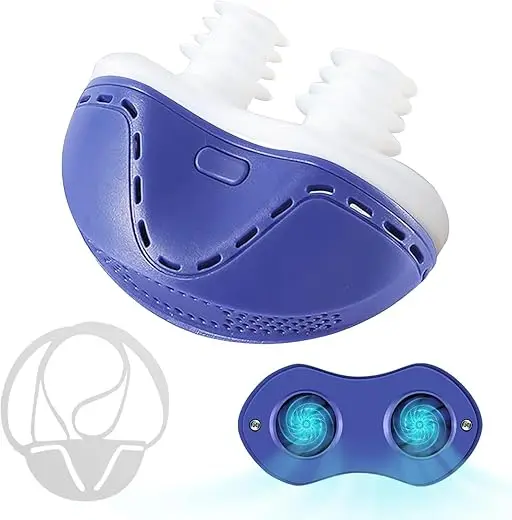Sleep apnea is a serious sleep disorder characterized by repeated interruptions in breathing during sleep. These disruptions can lead to a myriad of health issues, affecting not only the quality of sleep but overall health and well-being. Recognizing the symptoms early is crucial for effective management and treatment. This article will explore ten common symptoms of sleep apnea that should not be ignored, offering insight into their implications and what actions to take.
1. Loud Snoring
Understanding the Connection to Sleep Apnea
Loud snoring is often the most noticeable symptom of sleep apnea. It is typically caused by the relaxation of throat muscles during sleep, which can block airflow and create turbulent breathing sounds. While snoring is common, particularly among men and overweight individuals, it becomes a cause for concern when it is loud enough to disturb others’ sleep or is accompanied by gasping or choking sounds.
When to Seek Medical Advice
If loud snoring occurs regularly, particularly in conjunction with other symptoms, it is essential to seek medical advice. A healthcare provider may recommend a sleep study to evaluate the severity of the condition and determine whether it is affecting breathing patterns during sleep.
2. Choking or Gasping
Recognizing These Episodes
Episodes of choking or gasping for air during sleep are alarming signs of sleep apnea. These can occur when the airway becomes completely blocked, leading to brief awakenings where the individual struggles to breathe. Often, bed partners may witness these episodes and may report them to the affected person.
Implications for Health
Experiencing choking or gasping episodes can have serious implications, including increased risk of cardiovascular problems and other complications associated with sleep deprivation. It is vital to address these symptoms promptly with a healthcare provider for appropriate assessment and intervention.
3. Excessive Daytime Sleepiness
Impact on Daily Life
Individuals with sleep apnea often experience excessive daytime sleepiness due to interrupted sleep cycles. This constant fatigue can significantly impact daily life, affecting work performance, relationships, and overall quality of life. The sleep disruptions prevent individuals from reaching the deeper, restorative stages of sleep necessary for feeling rested.
Underlying Causes
Daytime sleepiness can stem from various factors, including the frequency and duration of apneic episodes during the night. For some, it may manifest as difficulty staying awake during monotonous tasks or unexpected naps throughout the day. Recognizing this symptom is crucial for early diagnosis.
4. Morning Headaches
Possible Explanations
Waking up with headaches is a common complaint among individuals with sleep apnea. These headaches are often tension-type or cluster headaches and can be attributed to low oxygen levels during sleep or the strain of awakening frequently throughout the night.
When to Consult a Doctor
If morning headaches become a routine issue, consulting a healthcare provider is essential. They may suggest a sleep study to determine whether sleep apnea is the underlying cause and guide appropriate treatment options.
5. Difficulty Concentrating
Effects on Cognitive Function
Cognitive function can be significantly impaired in individuals with sleep apnea. Difficulty concentrating, memory problems, and reduced alertness are common symptoms due to the lack of restorative sleep. This cognitive decline can hinder personal and professional responsibilities as well as daily decision-making.
Potential Consequences
The inability to concentrate can lead to accidents or mistakes in work settings, putting individuals at risk. It is imperative for those experiencing these symptoms to seek evaluation and find effective treatment to improve cognitive function.
6. Irritability or Mood Changes
Link Between Sleep Quality and Mood
Sleep apnea can significantly affect mood, leading to irritability, anxiety, and depressive symptoms. The cyclical relationship between poor sleep quality and mood disorders can create a challenging situation for affected individuals.
Recognizing Signs
Friends and family members may notice these changes before the individual does. Being mindful of mood fluctuations and seeking help can facilitate early diagnosis and treatment, ultimately improving overall emotional health.
7. Dry Mouth or Sore Throat
Connection to Breathing Patterns
Individuals with sleep apnea often breathe through their mouths during sleep due to airway blockages, leading to dry mouth or sore throat upon waking. This symptom may also be exacerbated by the use of certain medications or environmental factors such as dry air.
Strategies for Relief
To alleviate these symptoms, individuals may consider using a humidifier, staying hydrated, or discussing the use of a continuous positive airway pressure (CPAP) device with their doctor, which can help maintain open airways and reduce mouth breathing.
8. Frequent Urination at Night
Understanding Nocturia
Nocturia, or frequent urination during the night, can be a troubling symptom of sleep apnea. It can disrupt sleep further and exacerbate fatigue. This symptom often occurs due to increased production of urine when the body is in a prone position.
Health Implications
Frequent nighttime urination can lead to a cycle of sleep disruption and increased daytime fatigue. It is essential to discuss this symptom with a healthcare provider, as it may indicate underlying health concerns or contribute to the severity of sleep apnea.
9. High Blood Pressure
Correlation with Sleep Apnea
There is a well-established correlation between sleep apnea and hypertension. The repeated episodes of low oxygen saturation during sleep can lead to increased blood pressure levels, putting individuals at a higher risk for cardiovascular diseases.
Monitoring Your Health
Regular monitoring of blood pressure is crucial for individuals with sleep apnea. A healthcare provider may recommend lifestyle changes and treatments to help manage blood pressure and address sleep apnea simultaneously.
10. Nighttime Sweating
Causes and Effects
Night sweats may occur in those with sleep apnea due to the body’s struggle to breathe and maintain proper oxygen levels. This symptom can lead to further sleep disturbances and feelings of anxiety.
When to Consider Treatment
If nighttime sweating is frequent and disruptive, it is vital to consult a healthcare provider. They can evaluate whether this symptom is linked to sleep apnea and recommend effective treatment options to improve overall comfort during sleep.
Conclusion
Recognizing the symptoms of sleep apnea is crucial for early diagnosis and effective treatment. The ten symptoms discussed—loud snoring, choking or gasping, excessive daytime sleepiness, morning headaches, difficulty concentrating, irritability, dry mouth or sore throat, frequent urination at night, high blood pressure, and nighttime sweating—are important indicators that should not be ignored. Understanding these symptoms is the first step toward seeking professional help and improving one’s quality of life.
With proper diagnosis and treatment, such as lifestyle changes or the use of a CPAP device, individuals can experience significant improvements in their health and well-being. If you or someone you know is experiencing these symptoms, consulting a healthcare provider is essential for taking the necessary steps toward better sleep and overall health.
Frequently Asked Questions (FAQs)
What is sleep apnea?
Sleep apnea is a sleep disorder characterized by repeated interruptions in breathing during sleep, leading to poor sleep quality and various health issues.
How is sleep apnea diagnosed?
Diagnosis typically involves a sleep study, which can be conducted in a sleep clinic or with home monitoring equipment to assess breathing patterns and oxygen levels during sleep.
What are the main types of sleep apnea?
The three main types are obstructive sleep apnea (OSA), central sleep apnea (CSA), and complex sleep apnea syndrome, which is a combination of both OSA and CSA.
Can sleep apnea be treated?
Yes, treatment options include lifestyle changes, CPAP therapy, oral appliances, and in some cases, surgery. The choice of treatment depends on the severity of the condition and individual circumstances.
What lifestyle changes can help manage sleep apnea?
Weight loss, regular exercise, avoiding alcohol and sedatives, and sleeping on your side are effective lifestyle changes that can help manage sleep apnea symptoms.



